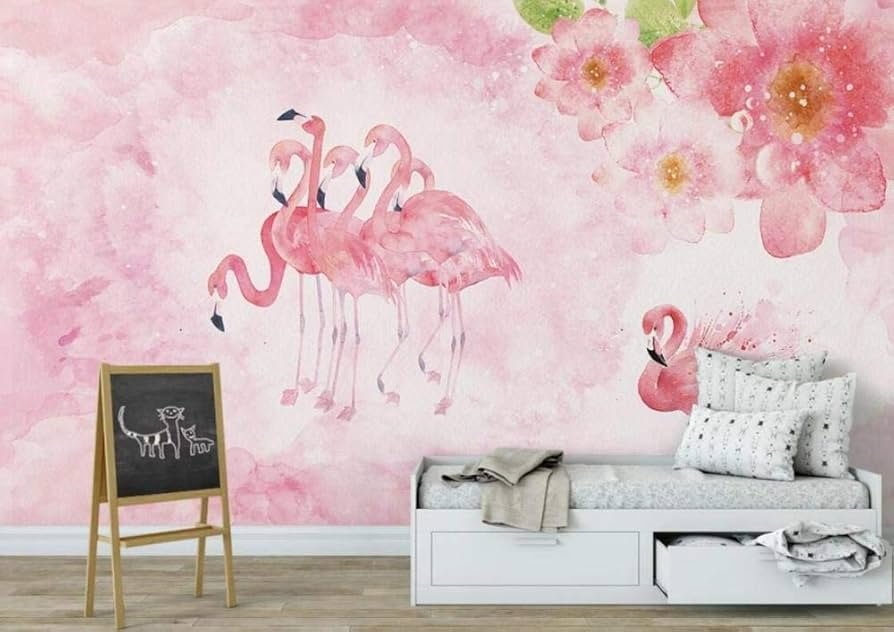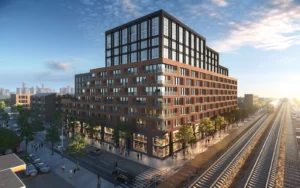The Rise of 3D Wallpaper: A New Dimension in Home Décor
In the landscape of interior design, the advent of 3D wallpaper has introduced a revolutionary way to enhance the aesthetic appeal of walls. Moving beyond the conventional two-dimensional patterns, 3D wallpaper offers a dynamic and immersive design experience that adds depth and texture to any space. This article explores what 3D wallpaper is, its benefits, the diverse design possibilities it offers, and how it contrasts with traditional wallpaper.
Understanding 3D Wallpaper
3D wallpaper is an innovative type of wall covering that creates an illusion of three-dimensional depth and texture on flat surfaces. Unlike traditional wallpaper, which is typically flat and patterned, 3D wallpaper employs various design techniques to give walls a tactile and visually engaging appearance. This effect is achieved through advanced printing methods and embossing processes that add layers of texture and dimension.
Materials Used in 3D Wallpaper
The production of 3D wallpaper involves a range of materials, each contributing to its unique appearance and functionality:
- Vinyl: Known for its durability and ease of maintenance, vinyl is a popular choice for 3D wallpaper. It is resistant to moisture and stains, making it ideal for high-traffic areas and spaces prone to spills.
- Fabric: Fabric-based 3D wallpapers offer a softer texture and a more luxurious feel. They can add warmth and elegance to a room, often used in living rooms or bedrooms where comfort is a priority.
- Non-Woven: This material combines fibers and textiles to create a flexible, breathable wallpaper. Non-woven 3D wallpapers are easy to install and remove, and they maintain their shape well over time.
Benefits of 3D Wallpaper
The unique characteristics of 3D wallpaper offer several advantages over traditional wall coverings. Here are some key benefits:
1. Enhanced Visual Appeal
One of the primary benefits of 3D wallpaper is its ability to create a visually striking effect. The three-dimensional elements add depth and texture, making walls stand out and serve as focal points in a room. This dynamic visual impact can transform ordinary spaces into extraordinary environments, enhancing the overall design of the room.
2. Versatile Design Options
3D wallpaper provides a wide range of design possibilities. From geometric patterns and abstract designs to realistic textures like brick, stone, and wood, the versatility of 3D wallpaper allows for creative expression and customization. Homeowners and designers can choose designs that complement their existing décor or create bold, new looks.
3. Improved Acoustic Performance
Certain types of 3D wallpaper have sound-absorbing properties, which can help improve the acoustic quality of a room. This can be particularly beneficial in spaces where noise reduction is important, such as offices, home theaters, or bedrooms. The texture of the wallpaper helps to dampen sound, creating a quieter and more comfortable environment.
4. Durability and Easy Maintenance
Many 3D wallpapers are designed to be durable and easy to clean. Vinyl options, for example, are resistant to moisture and stains, making them suitable for high-traffic areas like hallways and kitchens. The durability of 3D wallpaper ensures that it maintains its appearance over time, even in demanding conditions.
Design Possibilities with 3D Wallpaper
The versatility of 3D wallpaper opens up numerous design possibilities. Here are some creative ways to incorporate 3D wallpaper into interior design:
1. Feature Walls
Creating a feature wall with 3D wallpaper is a popular way to make a bold statement in a room. Whether it’s a dramatic geometric design, an intricate texture, or a natural stone effect, a feature wall draws attention and adds a unique visual element to the space.
2. Textured Ceilings
Extending 3D wallpaper to ceilings can create a striking and unexpected design element. Textured ceilings can add depth and interest, transforming a plain ceiling into a standout feature of the room.
3. Accent Areas
Using 3D wallpaper in accent areas, such as behind a headboard in the bedroom or around a fireplace in the living room, can highlight specific features and enhance the overall design of the space.
4. Commercial Applications
3D wallpaper is also popular in commercial settings, such as restaurants, hotels, and offices. It can be used to create distinctive environments, enhance branding, and leave a lasting impression on clients and visitors.
Comparing 3D Wallpaper to Traditional Wallpaper
While 3D wallpaper offers many advantages, it is useful to compare it to traditional wallpaper to understand its unique benefits:
Traditional Wallpaper
Traditional wallpaper is characterized by its flat patterns and colors. It is often chosen for its simplicity and classic appeal. While traditional wallpaper can be elegant and timeless, it lacks the added dimension and texture that 3D wallpaper provides.
3D Wallpaper
3D wallpaper offers a dynamic and visually engaging design with its three-dimensional effects. It can create a sense of depth and interest that traditional wallpaper cannot achieve. However, 3D wallpaper may require more careful installation and maintenance, depending on the material and design.
Conclusion
3D wallpaper represents a significant advancement in the world of interior design, offering a fresh and innovative approach to wall coverings. With its ability to create depth, texture, and visual interest, 3D wallpaper transforms ordinary walls into extraordinary design elements. Whether used as a feature wall, accent area, or in commercial settings, 3D wallpaper adds a new dimension to interior décor, bridging the gap between functionality and artistic expression.














Post Comment